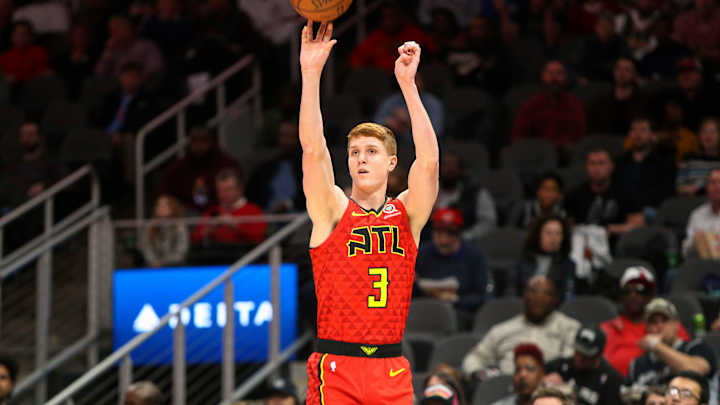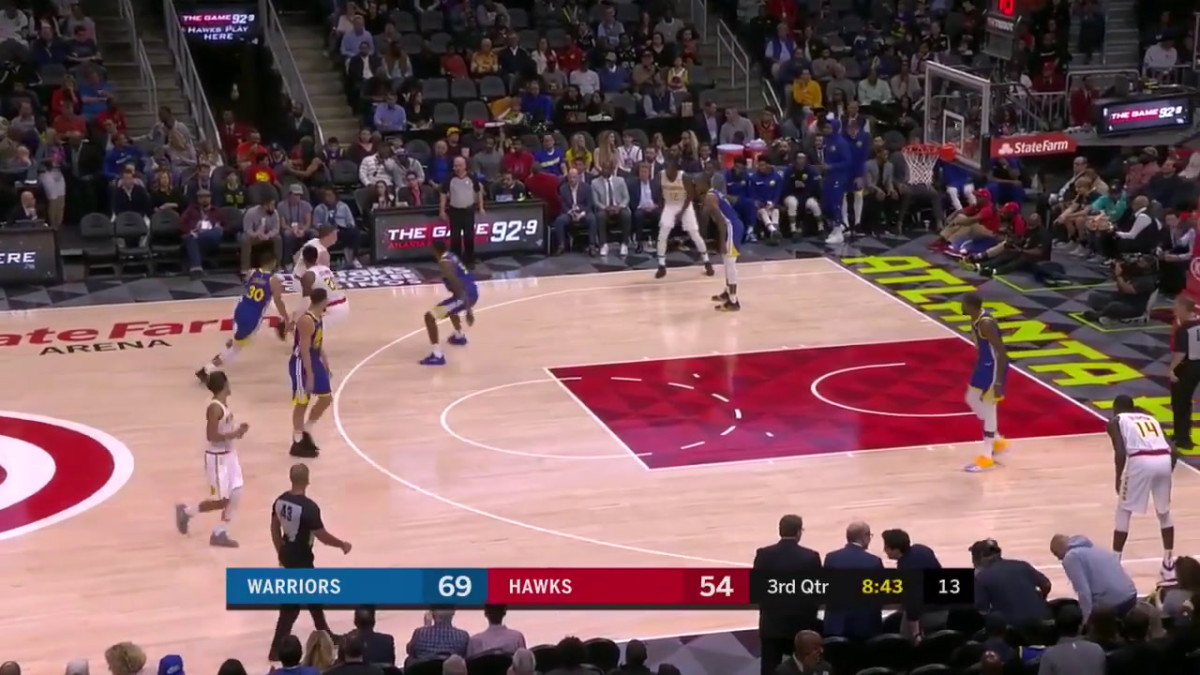Hawks Player Preview: Kevin Huerter

Championship contenders are made on the margins. Most every franchise pursues – and often secures – a player worth building around. It’s how the team constructs its roster around that player that makes the difference. Shrewd free-agency acquisitions, late draft picks, and internal development matters most when the margins are thinnest. The Hawks are not yet in the stage where those competitive moves matter, but have expressed a clear desire to get there and vision for how they might make it happen.
It’s within that framework that Kevin Huerter becomes a potentially crucial player for Atlanta’s next five years. Drafted 19 overall in 2018 – 14 picks after teammate Trae Young – Huerter nabbed a Second-Team All-Rookie distinction in a loaded class and might offer the Hawks a legitimately dynamic backcourt complement to Young. In his first year as a pro, Huerter established value as a shooter almost immediately, shooting 38.5 percent overall from distance and over 39 percent from at least 28 feet.
That allows Huerter not only to capitalize on the open looks he gets, but to provide space for Young by occupying his defender farther from the basket than most players would. He stepped into over three catch-and-shoot threes per game last year and seemed to have an especially strong symbiosis with Young, who assisted on more of Huerter’s buckets than any other Hawk. He isn’t quite in the vein of Klay Thompson, Kyle Korver, or J.J. Redick – tireless off-ball movers who slalom through mazes of screens – but Huerter’s stroke is smooth and versatile all the same. He can fire from a standstill, in transition, and occasionally off the dribble – with a high release and tidy footwork to boot:
He’s a clever off-ball mover who will dart behind defenders the moment they divert their attention:
Still just 21 years old, Huerter has plenty of room to improve as a shooter. While his super-deep bombing has its purpose, he could stand to create more shots through movement and there’s reason to believe he could enter the 42 percent stratosphere in time.
Even if he tops out as a pure shooter without rounding out the rest of his game, Huerter will be a valuable rotation player. It’s what else he could become that makes him so intriguing. At 6-foot-7, Huerter has built-in utility that many players at his position simply don’t. Not only does he have a high release point on his shot, but can compensate for mild limitations on defense that might severely hinder smaller players. He may top out as an average individual defender, but his size makes him fairly versatile and he looked the part of a capable team defender last season.
The compromise of building around a player like Trae Young is that it necessitates placing stout defenders around him – specifically another player who can defend the dynamic point guards Young can’t. DeAndre’ Bembry is already that player, but doesn’t offer nearly the shooting or quite the all-around play Huerter does. In time, Huerter should also offer more with the ball in his hands than a typical 3-and-D wing. He spent plenty of time initiating offense in his two years at Maryland, an experience that should translate to attacking and orchestrating from the second side in the NBA. Even as a rookie, Huerter ranked in the 75 percentile among wings in assist percentage and the 85 percentile in assist to usage ratio. Getting this sort of vision and playmaking from a shooting guard will only serve to better teammates and allow Young to work more without the ball:

While he won’t hesitate to let fly, Huerter also has a knack for keeping the ball moving and letting it find a more natural destination. As opponents pay more respect to his jumper, Huerter will find it easier venturing to the rim (though he’ll need to improve upon his 56 percent shooting there last year). The Hawks were significantly better on offense with Huerter on the floor – partially a product of playing so much with Young, but also a reflection of his value as a floor-spacer.
This season, he’ll be asked to take on more responsibility. He finished just 16 percent of Atlanta’s possessions as a rookie – a number that will almost certainly increase this season – and, like most Hawks, must cut down on turnovers as he continues to feel out the NBA game. He’ll likely supplant Bembry in the starting unit when he returns (Huerter’s shooting is probably more valuable in that lineup than it is with bench units), but those two could be entangled in a positional battle all season long. Occasionally, Lloyd Pierce will have to choose which one will close games, but could feature the pair together if DeAndre Hunter doesn’t have it or in guard-heavy units during the usual run of play.
Still, Huerter has the more intriguing long-term upside and gives Atlanta more options moving forward. Hitting on both him and John Collins with the 19 overall pick in consecutive drafts demonstrated Travis Schlenk’s capacity for getting the little moves right, though he still has a long way to go. Young is the sort of player who allows you to have championship ambitions. Huerter looks like one who could help them come to fruition.
